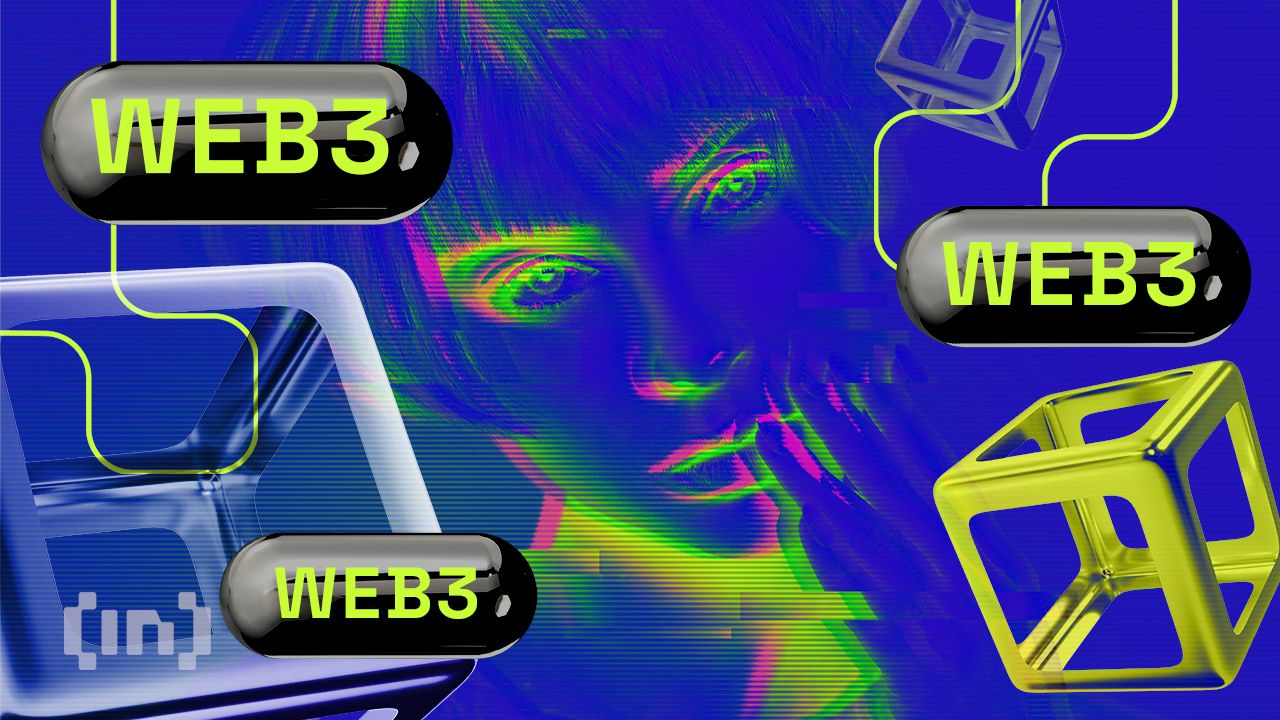The need for secure, private, and efficient communication channels becomes crucial as the world becomes more interconnected. Decentralized communication has emerged as a viable alternative to traditional centralized systems, offering numerous advantages such as censorship resistance, privacy, and enhanced security, especially for team structures and collaboration. This guide explains how web3 communication networks work and offers insights into the technical process.
- What are centralized team structures?
- What are some limitations of centralized team structures?
- Diving into web3 communication networks
- How web3 communication networks can revolutionize decentralized teams
- Challenges of decentralized communication in teams
- Peeking into the future of decentralized teams
- Frequently asked questions
- About the author
What are centralized team structures?

You’ve probably heard quite a lot about centralized team structures. The ones where a single entity controls everything. A one-size-fits-all, top-down approach? It’s old news, we know. But before we can appreciate the bright, shiny world of web3 communication networks, let’s take a little detour to understand the key limitations of these traditional centralized teams.
What are some limitations of centralized team structures?
Let’s cut to the chase. Centralized team structures have a few snags you need to be aware of:
- System vulnerabilities: Think of a single server holding all the data. Sounds efficient, right? But as users pile up, the system chokes, resulting in delays and crashes. To make matters worse, it’s like a shiny target for hackers.
- Freedom: Here’s the deal with centralized teams — the power’s concentrated at the top. It curbs employee autonomy and creativity. Not exactly a recipe for a vibrant, engaged team.
- Talent tunnel vision: With a localized hiring strategy, centralized teams often miss out on a diverse talent pool. In today’s globalized world, that’s a big miss. But hey, decentralized teams are fixing that.
- Communication: Picture this — a bottleneck in communication causing delays and disruptions. Not fun. With single points of failure, ensuring reliability and security is tough.
- Flexibility: In a centralized team, employees often need to be in a physical office. That’s a pinch on flexibility and work-life balance. Decentralized teams, on the other hand, are changing this, leading to cost savings and happier employees.
Diving into web3 communication networks
Web3 communication networks decentralize power, making them more secure and transparent. Some networks lean on the blockchain, while others use peer-to-peer (P2P) technology, distributed hash tables (DHTs), or mesh networks.
Some blockchain networks incorporate a decentralized networking layer for added strength. A case in point is libp2p, a modular P2P networking stack used by Ethereum, Polygon, Polkadot, Mina, and others. A stack like libp2p, among others, sets the stage for innovative decentralized communication methods.
Decentralized communication systems: a snapshot
There are three key decentralized communication systems: P2P networks, DHTs, and mesh networks.
Sponsored SponsoredIn P2P networks, nodes connect directly to other nodes. The benefits include increased privacy, lower latency, and less reliance on central servers. BitTorrent and WebRTC are examples of web3 communication.
DHTs are decentralized systems storing key-value pairs across nodes. They facilitate efficient routing and storage of data in P2P networks and provide fault tolerance. Kademlia, Coral, and Chord use DHTs in web3 communication.
Mesh networks are decentralized communication systems where nodes relay messages through various paths. They’re resilient, fault-tolerant, and scalable. FireChat, RightMesh, and Althea are mesh network examples in web3 communication.
Benefits of web3 communication networks
Regardless of the technology, web3 communication networks are typically designed to be peer-to-peer, encrypted, open-source, and resistant to censorship and surveillance, and they often work together to create a fully-fledged system or stack. This allows for greater transparency, privacy, and community participation in the development of the network.
- Increased privacy and censorship resistance
- Lower latency
- Reduced reliance on central servers
- Fault tolerance and redundancy
- Secure, transparent, and tamper-proof channels
- Increased resilience and scalability
How web3 communication networks can revolutionize decentralized teams
Web3 communication networks and decentralized teams go together like peanut butter and jelly. These networks bring a host of benefits to decentralized teams — think autonomy, a global talent pool, cost savings, and more. It’s like giving your team the keys to a shiny new sports car — with everyone at the wheel.
Sponsored- The power of autonomy: With decentralized communication networks, team members get to flex their independence, creating a sense of ownership and encouraging innovative solutions. It’s like getting rid of the training wheels and letting your team fly.
- The world is your talent pool: No need to limit yourself to local talent. With decentralized teams, you get access to the best minds around the globe, leading to a melting pot of innovative ideas, inclusivity, and diversity.
- Flexible work, happy team: These networks offer more flexibility for your team, letting them work where they feel most productive – whether that’s at home, at a café, or on a beach in Bali.
- More hands on deck: For web3 and crypto organizations that tap into the genius of pseudonymous users, decentralized teams mean more contributors and more potential for innovation. It’s like having a bustling ideas lab, with contributions coming from all corners of the world.
In a nutshell, web3 communication networks are pushing the boundaries of what’s possible for decentralized teams, enhancing creativity, productivity, and collaboration.
Challenges of decentralized communication in teams

Sure, decentralized communication networks can present a few bumps in the road. There’s nothing like a communication breakdown or time zone mismatch to shake things up a bit. But hey, no pain, no gain, right?
- Communication breakdowns: Like a dropped phone call, communication snafus can cause delays and disruptions in the decentralized world. It’s like playing a game of telephone – you never know what message might come out the other end.
- Time zone tango: Your team members might be spread across time zones like butter on toast. This can make it tricky to find a common time for everyone to pow-wow. It’s like trying to organize a family reunion with relatives on every continent.
- Missing the office vibes: Decentralized teams might miss the buzz of a traditional office environment – the branded coffee mugs, the motivational posters, the water cooler gossip. It’s about trying to keep the company culture alive in a home office.
- Safety first: Security and privacy are the names of the game in decentralized communication networks. Without proper safeguards, these networks could be ripe for hacking. It’s like leaving your front door unlocked – you never know who might wander in.
Overcoming the challenges
Now, for the good news. There are ways to ace this decentralization thing and smooth out those bumps:
Sponsored Sponsored- Decentralized communication tools: Tools like peer-to-peer networks, distributed hash tables, blockchain-based communication, and mesh networks can help squash those pesky communication issues and time zone mismatches. It’s like having your very own communication superpower.
- Speaking the same language: Offering multilingual support can help break down the language barrier and ensure everyone’s singing from the same hymn sheet.
- Virtual team bonding: Virtual team building is like the office party for the digital age, helping to build that sense of community and shared culture, no matter where your team is located.
- Security upgrades: With measures like encryption, multi-factor authentication, and zero-knowledge proofs, you can help keep data secure and ward off potential breaches. It’s like having your very own cyber bodyguard.
Peeking into the future of decentralized teams
The future of decentralized teams — powered by web3 communication networks — looks exceptionally bright and barrier-free. Think of a world where each team member is a globally distributed node, all interconnected via secure, fast, and decentralized channels. The hunt for talent transcends geographical borders, and “work from anywhere” isn’t a perk but a standard practice.
The future ushers in a work-life reality that’s flexible, innovative, and truly global, all thanks to the evolution of web3 communication networks. Ready or not, here comes the future of work!
Frequently asked questions
How does web3 foster innovation in communication networks?
What safeguards do Web3 Communication Networks provide against censorship?
How do web3 communication networks enhance decentralized teams?
Besides web3 communication networks, what other technological innovations are shaping the future of decentralized teams?
How is performance management adapted to the unique structure of decentralized teams?
About the author

Richa Joshi is the co-founder and marketing lead at Push Protocol. She has close to 12+ years of techno-functional experience in product management and development across multiple facets of the product lifecycle. This includes 2+ years of marketing experience in the blockchain space and over nine years of technology experience. She previously worked with Deloitte, contributing to and leading teams before foraying into web3.

